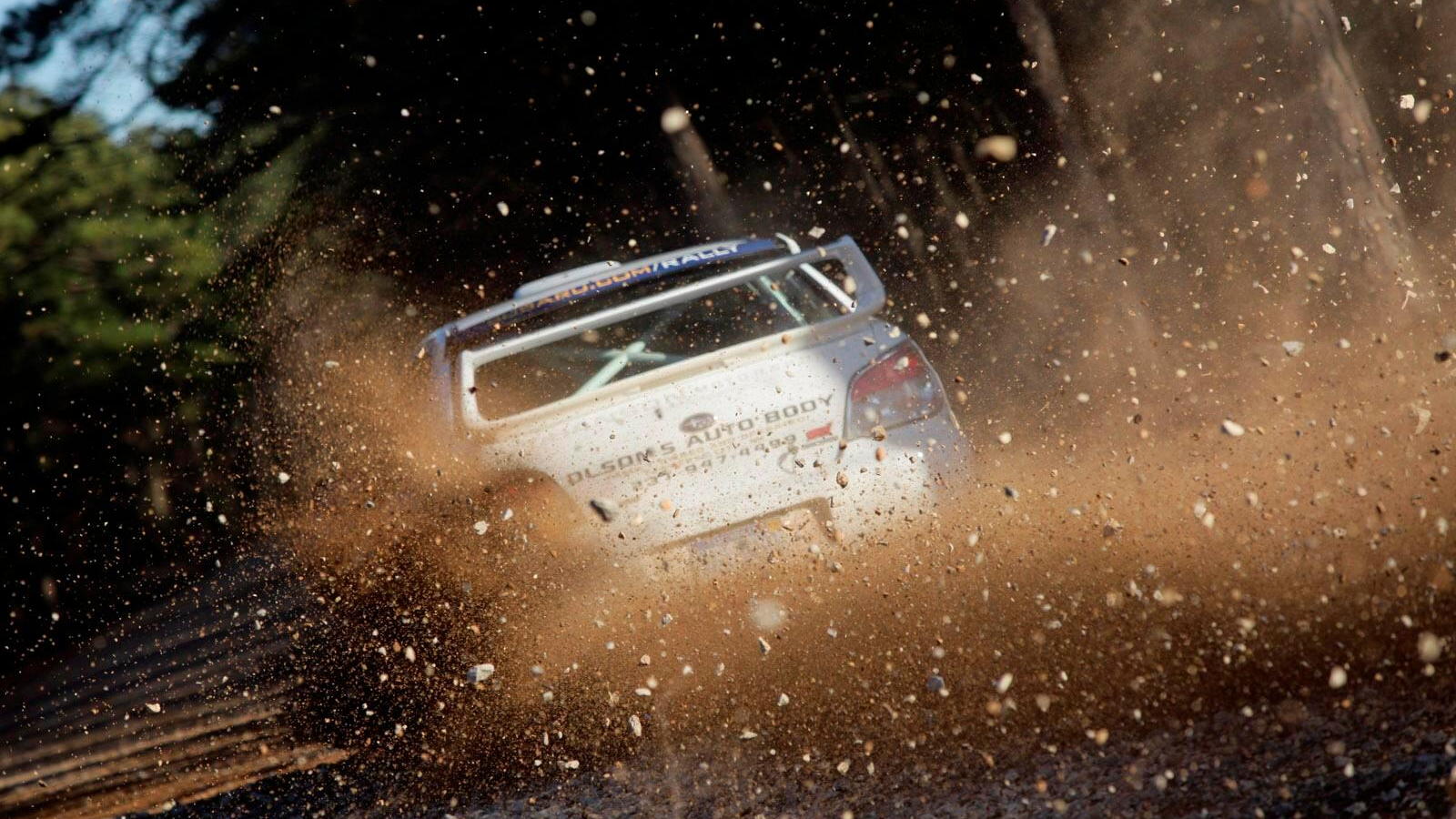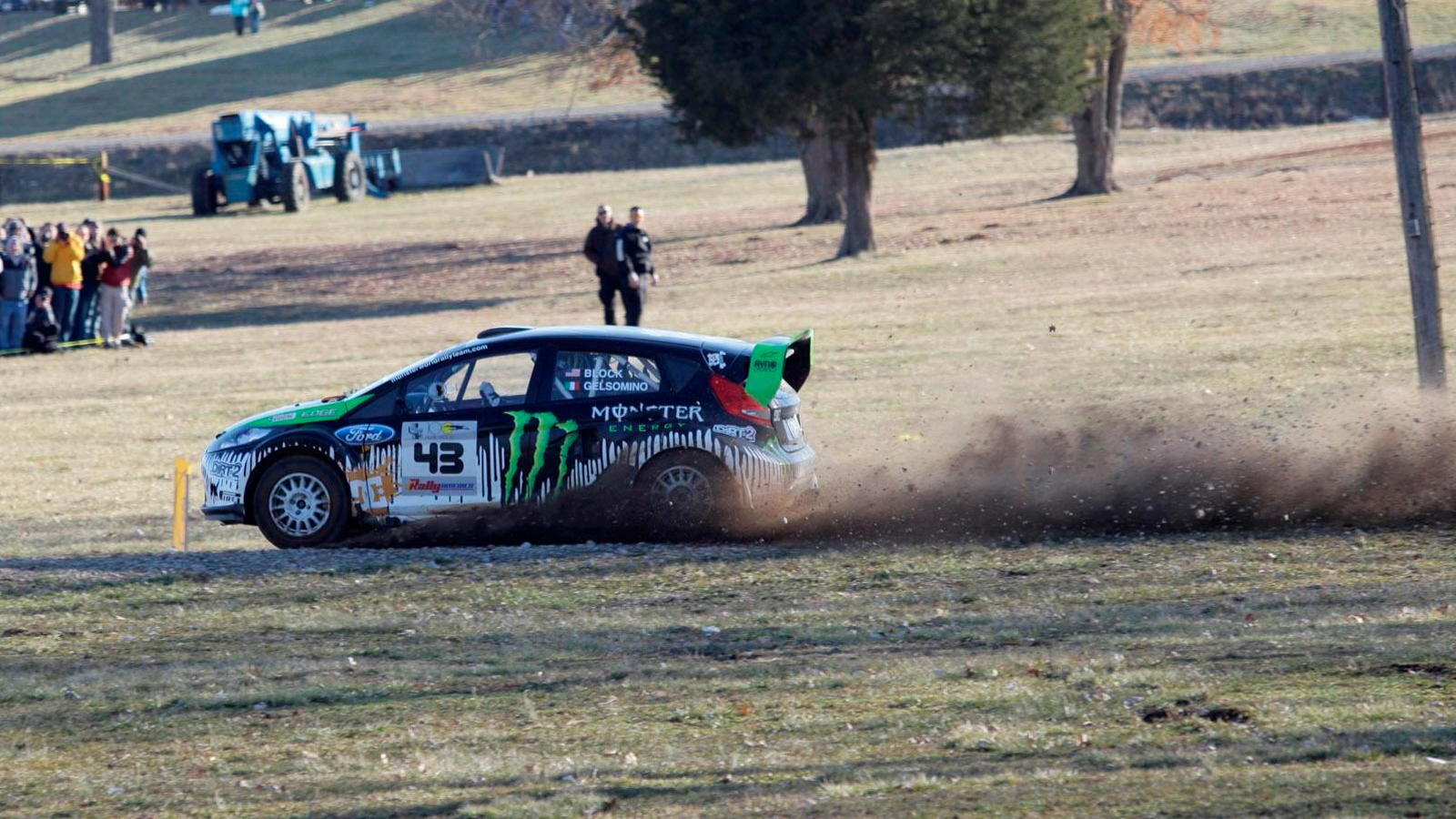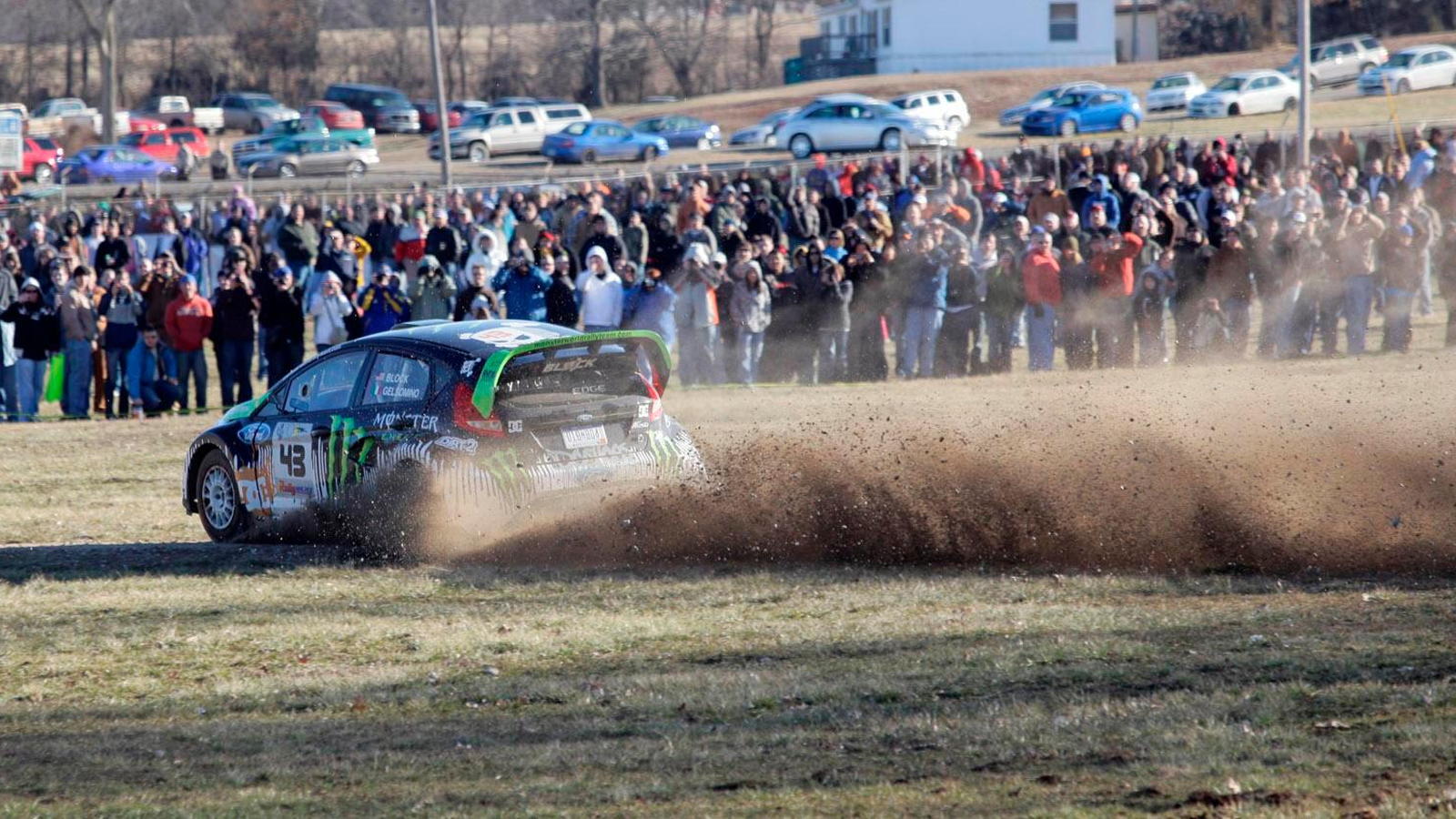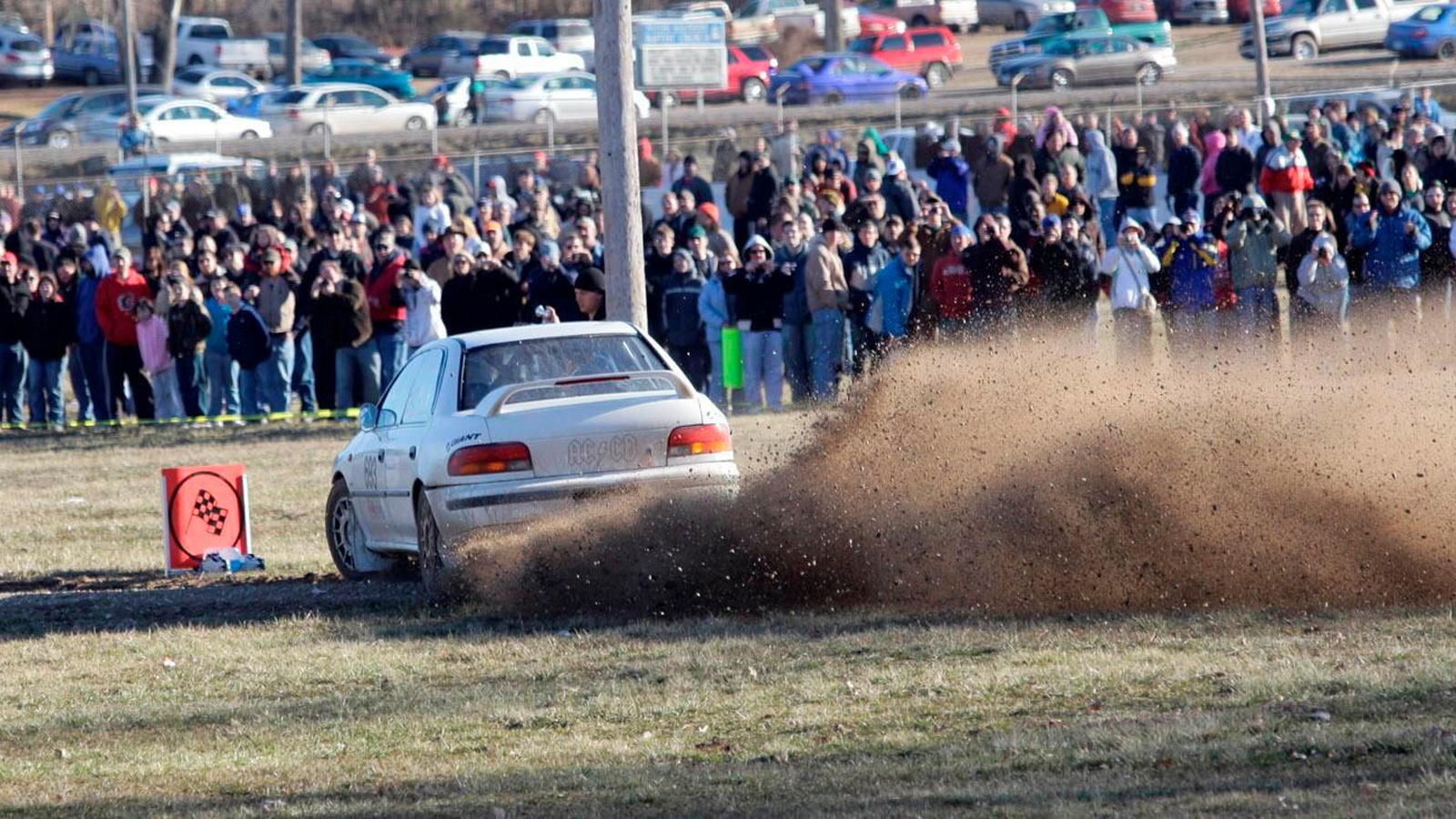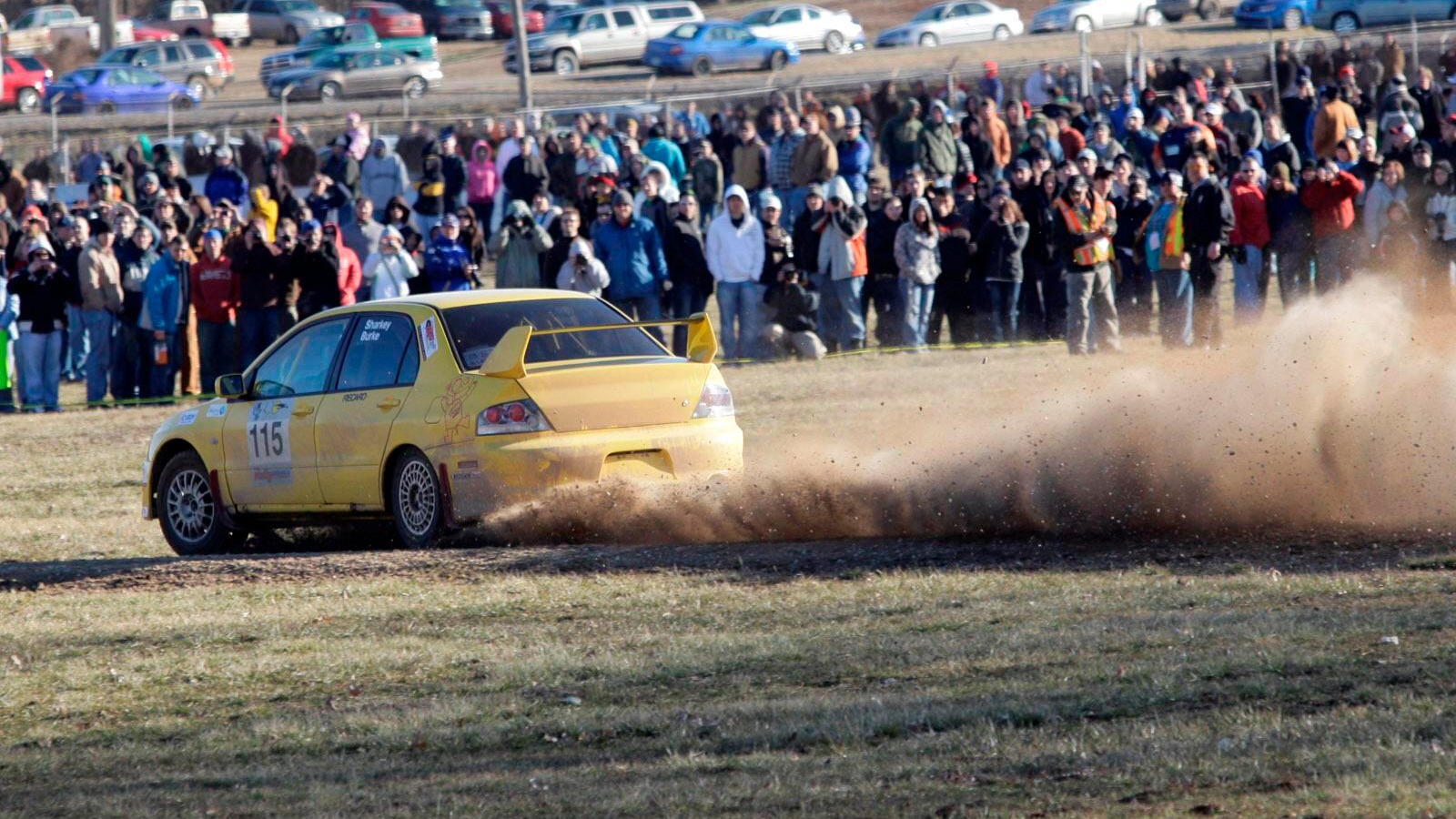As the driver slams the shifter into fourth--a rock bent the shift linkage a few miles back--and you race toward 80 mph on a tight, rutted, rocky and occasionally jump-strewn gravel road, you bury your head in the few notes you have, struggling against instinct and physics to keep feeding the information your wheelman needs to avoid an abrupt venture into amateur forestry. Ten hectic minutes later you're back to the speed limit, on the road to the next stage. Rinse and repeat for another 12 hours. This is the 2010 Rally-America 100 Acre Wood rally in and around Salem, Missouri, and it's easily one of the craziest things you can do with a weekend.
Oh, and we beat Travis Pastrana, too. Sort of.
Read on for a full run-down of the weekend.
To fully understand our days in the dirt, you need to know about the car and team.
Our car is a G2-classed, 1990 Civic--sort of. It has a tub from one car, a front end from another, and a roof from a third--welded on after it was rolled by the previous owner. The roll cage is an older design that was grandfathered in despite not meeting the letter of the current FIA specs. Fiberglass Cobra seats, five-point racing harnesses and a basic set of fire extinguishers round out the in-car safety gear.
Power comes from a stock D16ZC engine, and puts about 95 horsepower to the front wheels. We had no limited-slip differential for this event, though one will likely be going into the car soon. Suspension is one of the most important elements on a rally car, as it has to handle truly brutal surfaces at speeds that would--and did--bend or break standard OEM parts. Unlike the big teams, we're not running twin-tube Ohlins shocks. Simple KYB AGXs with Ground Control sleeves and rally springs did the job, though they paid the price: we blew or bent a shock on the right rear--haven't taken it apart yet to find out--halfway through the second day, but soldiered on anyway.
Wheels and tires: rather ancient Hankook G31 mud/gravel tires on stock Honda Del Sol wheels gave our car the traction it needed to carve through the 102.86 miles of Missouri's best and worst gravel roads, low water bridges, dips, jumps and crests. Seeing those obstacles at night requires good lighting, but we made do with nothing but some eBay projector lights and a pair of entry-level Hellas mounted to the hood. More on those later.
Rally fans will note that we're missing one important piece of kit: the rally computer. As co-driver, I was the closest thing we had, leaning over to see the odometer on stage to call the few notes we had in the route book at the proper times. We skipped the recce, as it would have meant another day from work and another overnight stay, so no pace notes. It also meant using a stopwatch as our only help during the transits, where you have a one-minute window to arrive at the destination, and being early or late means a penalty assessed against your overall time. Despite the rudimentary equipment, we incurred just one minute of penalty time, and that was on our first transit.
Our team consisted of myself, as co-driver, and Daniel Vaught, as driver. This was my first rally event ever, and Daniel's first event to drive, though he competed as co-driver in last year's Rallye de Paris in Texas. We ran with a completely borrowed setup--truck, trailer and rally car--through the immense generosity of Julius and Becky Miller, owners of the truck and trailer, and Gideon Mecum, owner of the car. To say we were the least prepared, lowest-budget team there is an understatement of the highest order. We started the rally with the goal of finishing and learning the craft--no delusions of grandeur here.
Our crew was recruited at the last minute, literally on the morning of the first day of rally as some friends from nearby Northwest Arkansas who had planned to attend as fans gave up most of their beer-drinking and photo-shooting to drive our service truck and help make repairs during the service intervals. Many thanks to Jim, Vance, and Mat for all your help and support, and thanks also to Drew and Last Ditch Racing, the Haases, the Schwantners, and all the other people that helped get us through the event.
Read on for Day 1
Day 1, Trespassers Wil
Since we were running the rally as regional competitors--as opposed to the likes of Travis Pastrana, Ken Block, Antoine L'Estage and others in the national points event--we ran day one as a separate rally, Trespassers Wil.
We kicked things off with the practice stage, which was a frighteningly rough and rocky stage of just over 3 miles in length. This is where we came to the realization that having the route book was not equivalent to having pace notes--we had an idea of 1 out of every 5 turns, with the driver having to do the rest on blind faith and raw ability.
Scared nearly senseless after that first exposure to real rally driving, we anxiously geared up for the start of the Trespassers Wil.
The first cars were off in rapidly waning twilight, while those of us starting toward the end of the grid spent all but the first stage under a heavy blanket of backwoods darkness. With an LED light dangling from my neck and more adrenaline pumping through my system than a human should experience in a week, we set off on the first stage of competition, "KP to Ollie." By the end of it, the fear was (mostly) gone, replaced by an incredible sensation of excitement and enjoyment. This rally thing is addictive.
During the next stage, one of our Hella lights separated from the housing--only the solder job on the terminals held it on. It dangled and bounced, eventually getting stuck on the hood and pointing straight into our eyes. We had to kill the big lights and run on the stock headlights for the rest of the stage. Fortunately, during the next transit, we happened upon a family at the side of the road, watching the cars pass, and they sent their son off on a four-wheeler to grab some duct tape to get the light secured in its housing and pointed the right direction. After fixing it, I hopped back in the car and we were off again.
We hammered through the night, running a total of 37 miles of stages to finally end up back in Salem. Six grueling hours in the car with only brief breaks in service left us completely drained and nearly frozen to the bone--the car has no heater, and temperatures were below freezing throughout the night. We nearly ran out of gas on the final stage, but Daniel hypermiled the car as best he could, driving most of the last leg in 4th gear. We made it back to Salem on fumes, and the car took 9.8 gallons into its 10 gallon tank when we filled it up the next morning.
Read on for Day 2
Day 2, Rally in the 100 Acre Wood
After six hours of sleeping like the dead, we were back up and at it, headed to another Parc Expose, where we were met by an incredible crowd of fans from all over the region. Autographs were signed (even by us) and photos were taken. The level of interaction and interest from the average spectator is just amazing.
Then we dove back into the harrowing hills and valleys around Salem, running strong over what would prove to be some of the most brutal, unforgiving terrain of the entire weekend through stages 6, 7 and 8. Somewhere along the way, we managed to start a problem which would eventually grow worse--a bent suspension member on the right front. Daniel fought on in the driver's seat, not slowing the pace at all, though the wheel was now at about 10 o'clock to drive straight down the road.
Following a service break, the second set of stages saw us head to Potosi for the 0.52-mile Super Special Stage, a spectator favorite that drew about 2,500 people to see the cars run the entire short course within screaming distance. This is where Travis Pastrana's run at the rally ended, as he pulled the left rear tire free from the wheel on a hard, rutted right-hander, damaging the suspension as he struggled to finish the stage. Just a few hundred feet past the finish line, he and co-driver Christian Edstrom hopped out of the car and frantically began attempting repairs, but after assessing the damage, and without the aid of their service team due to the rules of the rally, they quickly realized that their day, and their rally, was over. They had won all but one stage to this point, and were leading the event overall, but unable to start the next stage, they were scored a DNF for the event. Better luck next time, guys.
Running through the rest of the day went fairly smoothly, though we managed to hit one dip/water hazard so hard we dented the rear skid plate up into the gas tank and dropped the entire exhaust from that point back. The front suspension issue became worse, with the car wanting to go into a hard slide to the right any time the wheel wasn't cranked over to about 9 o'clock. Even on the pavement transit after the final stage, the car was completely unstable above 50 mph. That didn't stop us from hitting 75+ mph down the dusty, dimly-lit tube of tree, rock and night as we blasted through the final stage, however.
The craziest thing we've ever done
Rally is, without a doubt, just about the most insane thing a person can do in a car without the aid of a Hollywood stunt team. It is certainly the craziest thing either of us have ever done, and at the same time the most satisfying, exciting, mind-erasingly pure experience of speed, danger and the desire for more.
Read on for overall winners and results
Overall winners and results
Having finished the rally near the back of the pack--a result we're happy with, considering our lack of experience and equipment--we appreciate all the more fully the speed and ferocity required to attack the rally like the pros do. In the Open class, Pastrana and Edstrom were running at their typical break-neck speed, putting more than a minute on the rally's eventual winners, Ken Block and Alex Gelsomino, by the end of the first day, and adding to that lead the second day until their DNF. Block's own performance was spectacular as well, managing the overall win against the pressure of Antoine L'Estage and Nathalie Richard despite only securing three individual stage wins to L'Estage/Richard's four. Block's fifth win sets a new record, and further establishes his dominance of the 100 Acre Wood.
In the 2WD class, Christopher Duplessis and Catherine Woods put on an incredible show, finishing 10th overall and beating many of the SP and Open class all-wheel-drive cars outright. At the regional level, the Krolikowskis took the overall with a brisk 1:03:22.4 in their Open-class car, while the Huebbe brothers won G2--the class Daniel and I competed in--with James and Caitlin Haas hot on their heels.
For the full results, check out the Rally-America website.
Read on for the conclusion.
Community of racers
Despite the growing popularity of the sport in North America (even in the face of a tough economy), the influx of professional teams and big personalities, the rally community is just that--a community of racers, friends, supporters and fans. Everyone is friendly, and willing to lend a helping hand, a tool, or a word of advice. This is true, at some level, of all motorsports I've been a part of--but the rally community is at the front of the pack, from the event organizers to the fastest drivers and co-drivers on the podium to every privateer and semi-pro and their service crews.
Rally is indeed a crazy thing to do, but with such a fun, friendly group of men and women behind it, and the intense experience of being on stage, it's even crazier not to do it.
